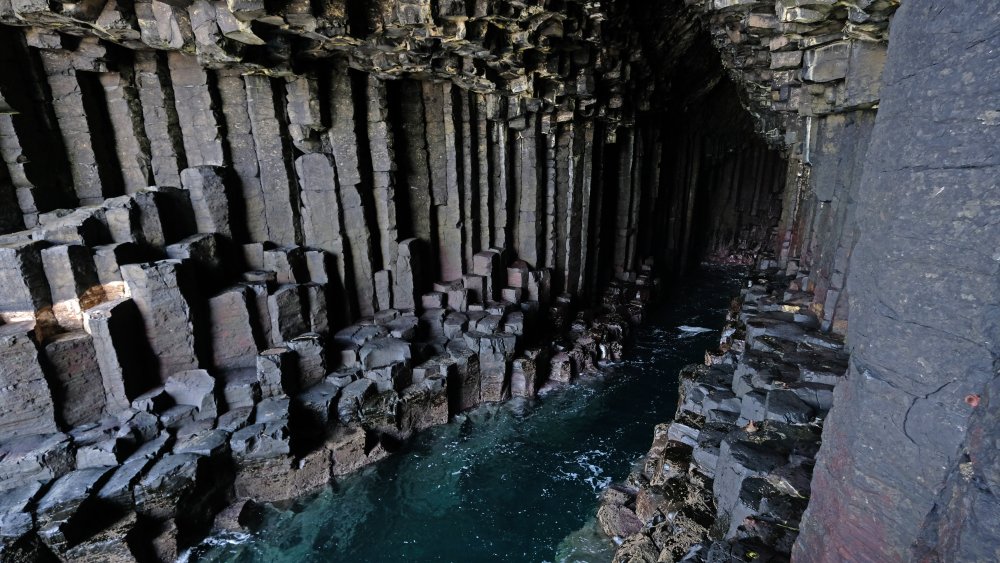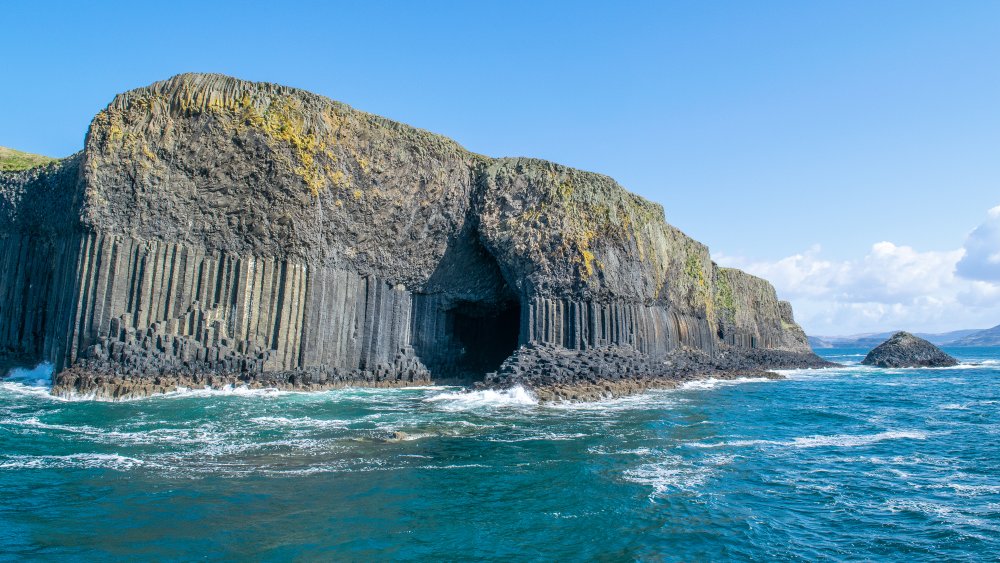The Cave That Inspired Pink Floyd And Jules Verne
Known to the Celts as "The Cave of Melody", what is now known as Fingal's Cave has been well-documented in ancient Irish and Scottish Celtic legends for centuries. According to one Irish legend, the 72 feet tall and 270 feet deep cave off the coast of the United Kingdom was made of end pieces of a bridge built by Irish giant Finn McCool so he could traverse the water and visit Scotland, where he could fight a rival, according to Atlas Obscura. In actuality, the cave is made up of hexagonal columns of basalt shaped in ordered six-sided pillars that make up its interior walls.
After eons spent in legend, the natural wonder was rediscovered in the modern world when naturalist Sir Joseph Banks visited the landmark in 1772. At the time of Banks' journey, Fingal, an Ancient Epic Poem in Six Books was a popular epic poem in Europe, even impacting Goethe, Napoleon, and Banks, who promptly named the Scottish cave, which already had the name Uamh-Binn (after the Irish legend), later memorializing it as "Fingal's Cave".
Ages of inspiration
However, it was only when German composer Felix Mendelssohn visited the natural wonder that the cave really rocketed to fame. His verse describing the cave to his sister went as follows: "In order to make you understand how extraordinarily the Hebrides affected me, I send you the following, which came into my head there."
Mendelssohn's love of Fingal's Cave quickly spread across Europe, assisted by artist J. M. W. Turner's painting "Staffa, Fingal's Cave" that same year. According to Atlas Obscura, William Wordsworth, John Keats, Lord Tennyson, and Queen Victoria all visited the cave, as well as adventurer-turned-author Jules Verne who used it in his book The Green Ray, and mentions it in the novels Journey to the Center of the Earth and The Mysterious Island.
Some 100 years later, British rock group Pink Floyd named one of their early, unreleased songs after the cave (an instrumental written for the film Zabriskie Point but not used). Nowadays, individuals can visit the cave on a cruise (although boats cannot enter the cave) or visitors can travel to the small island of Staffa and hike into the cave.

